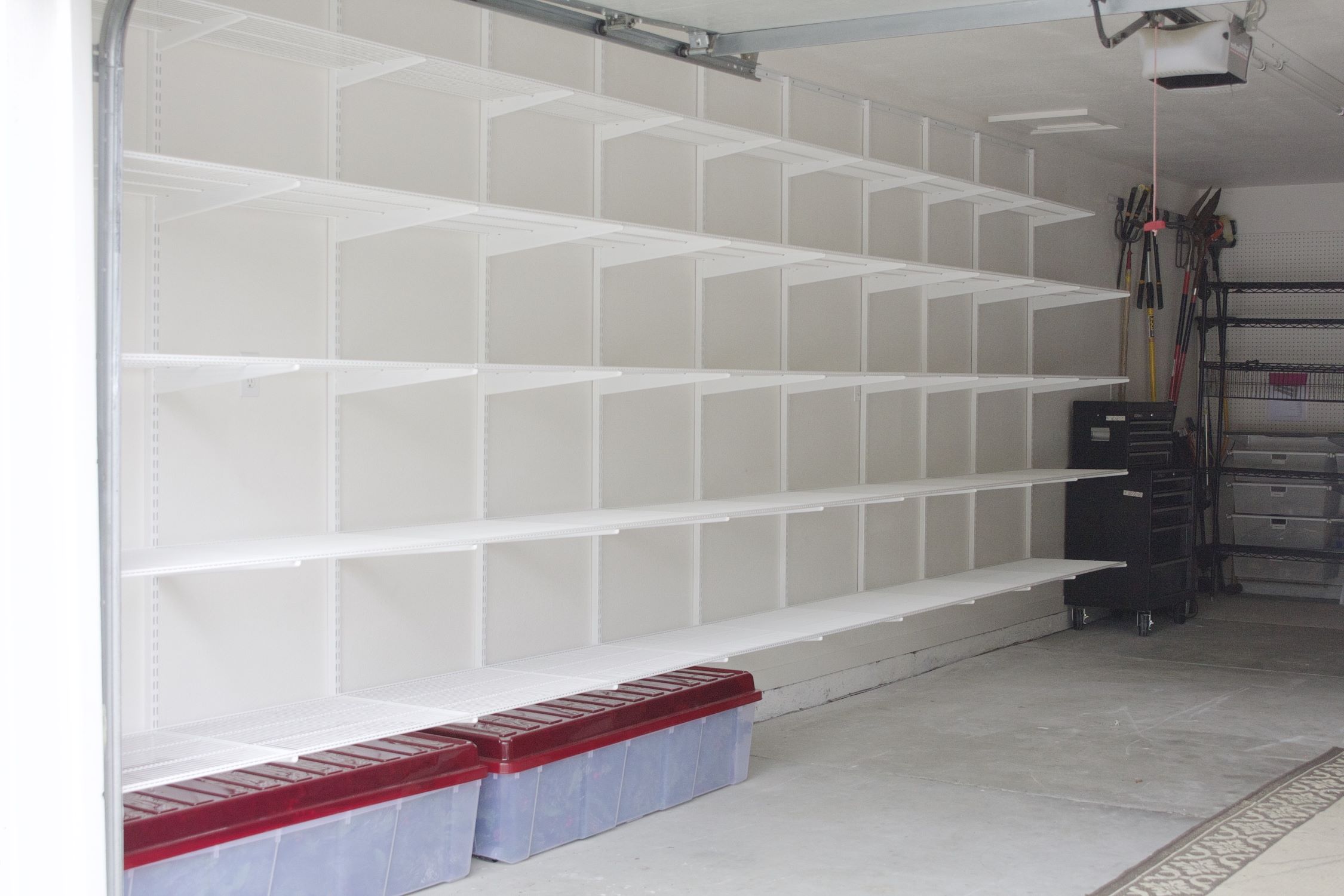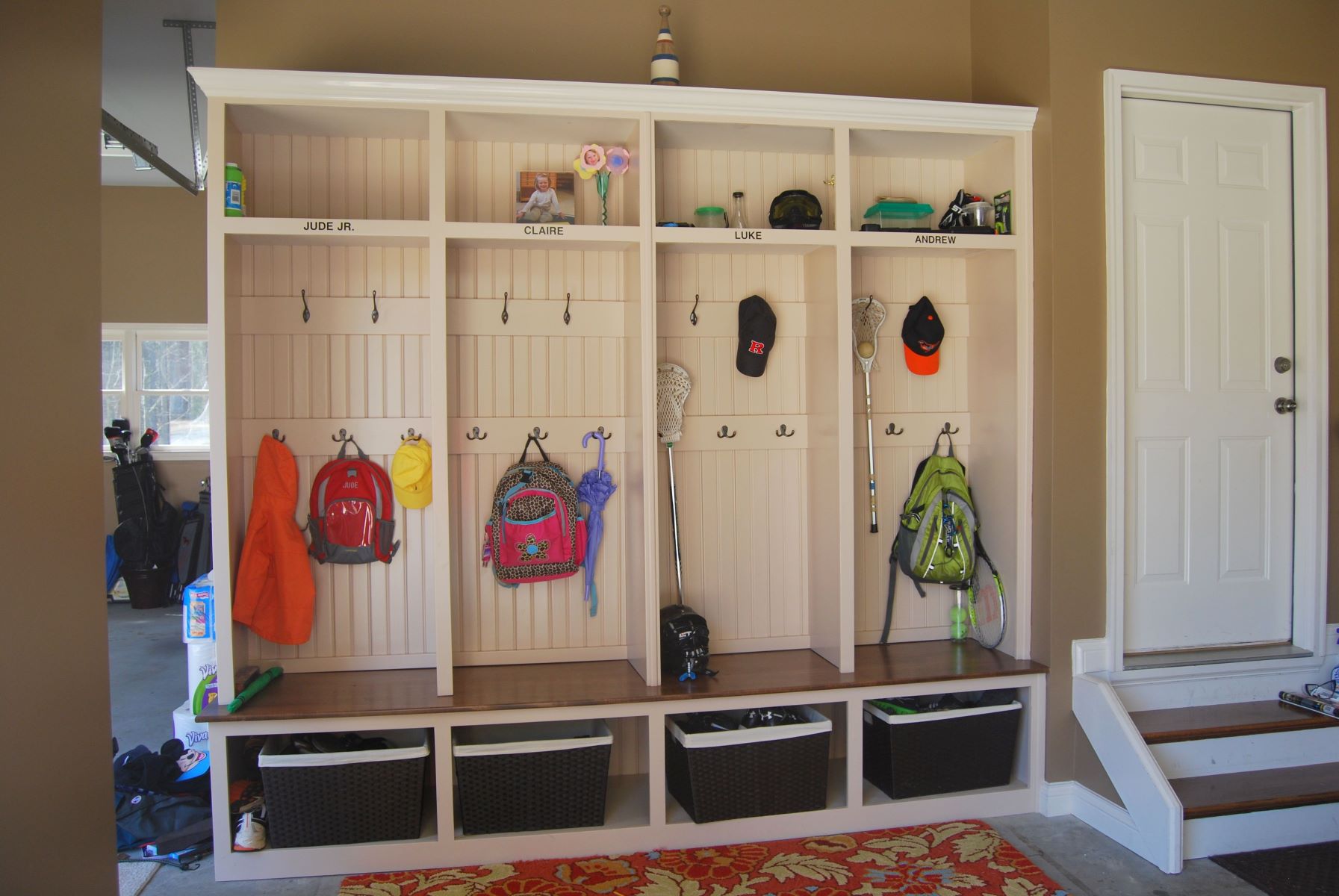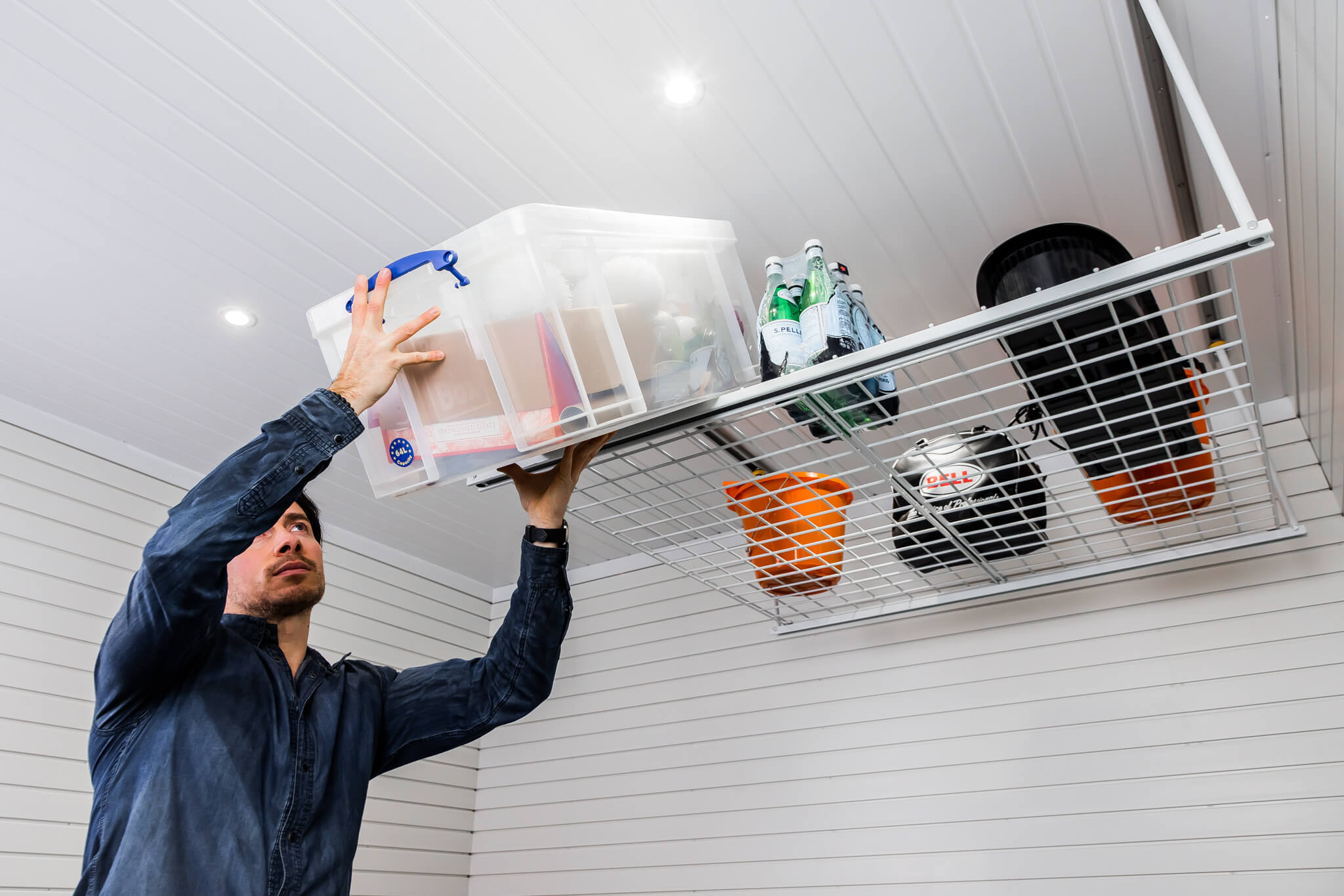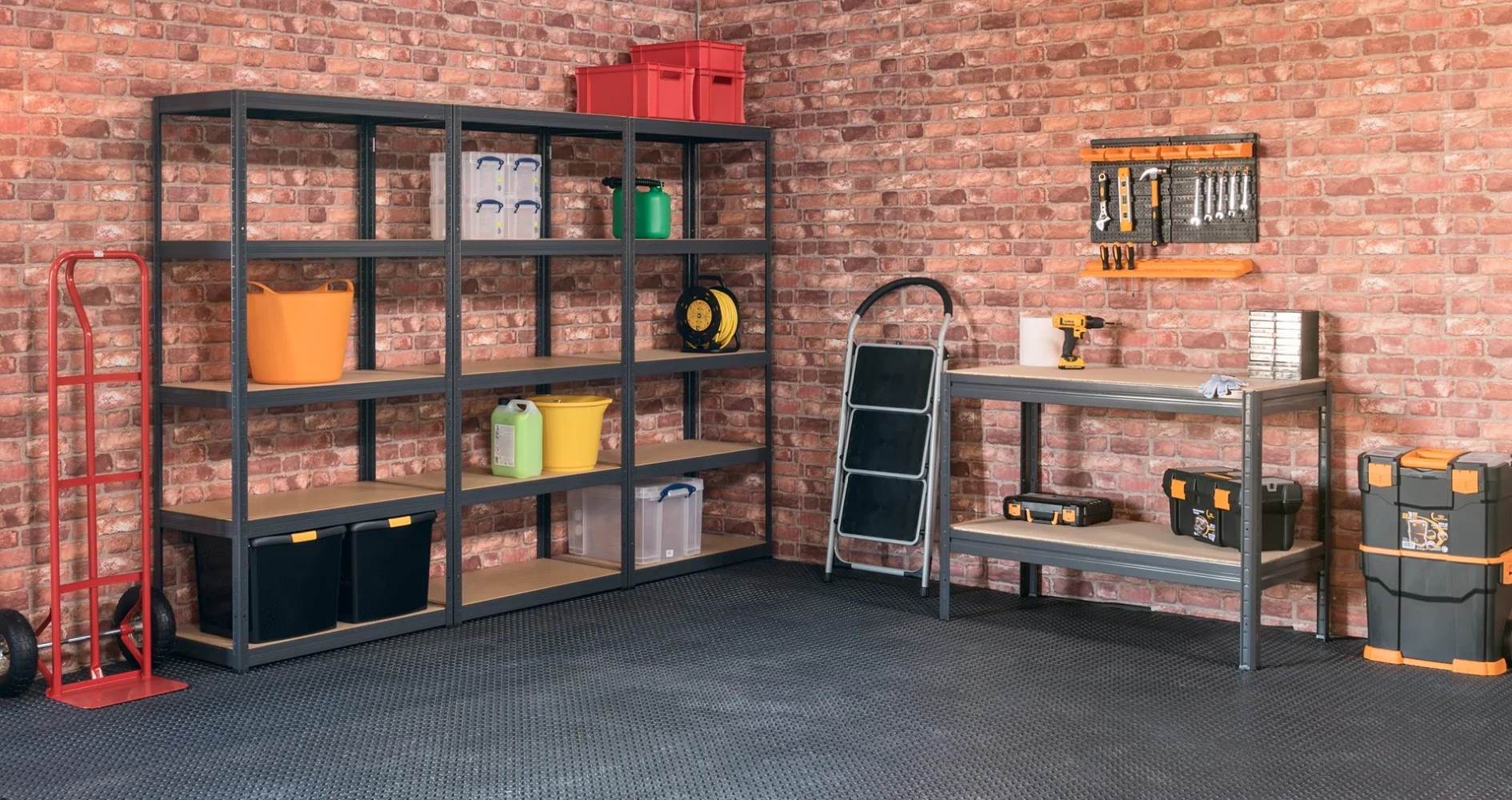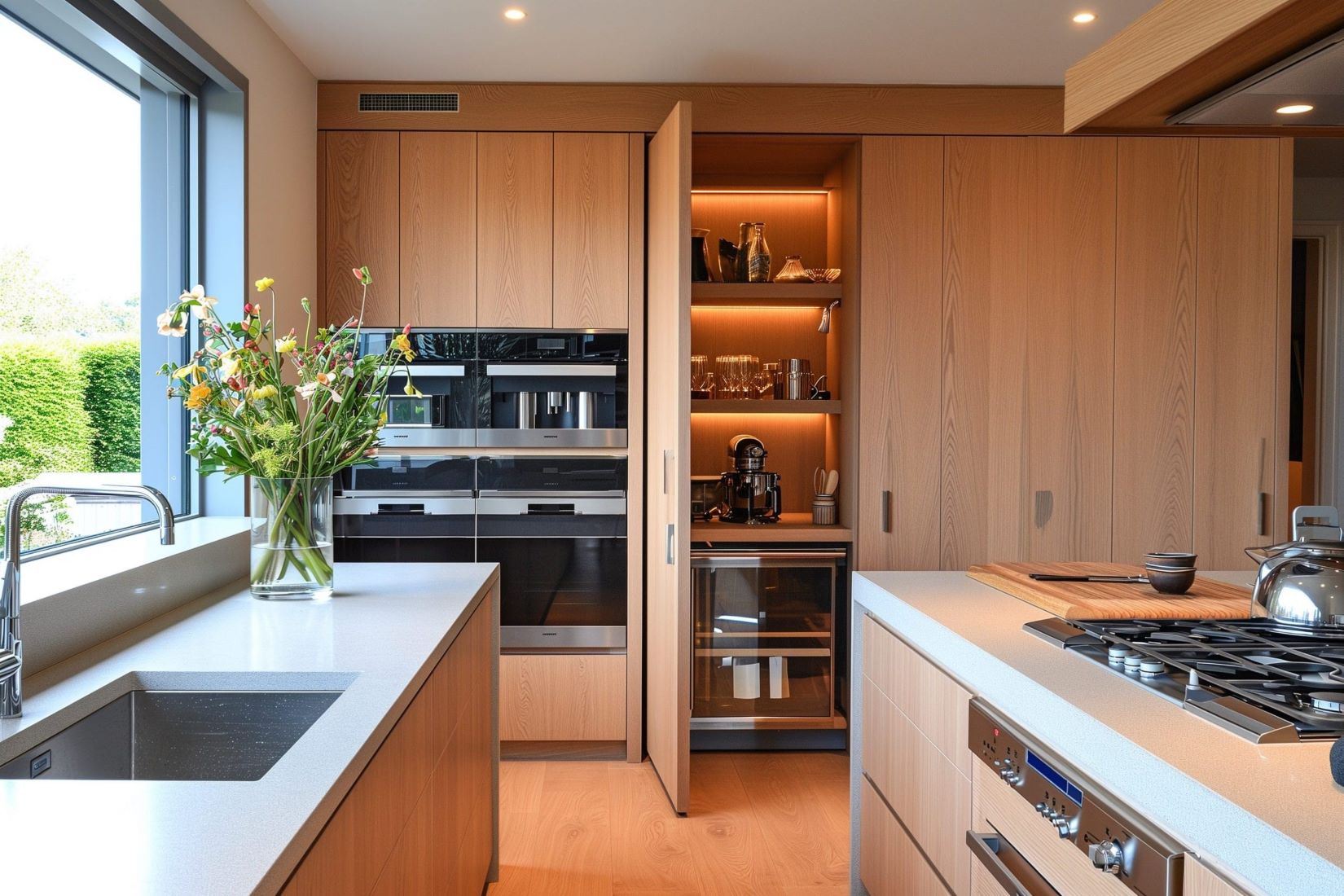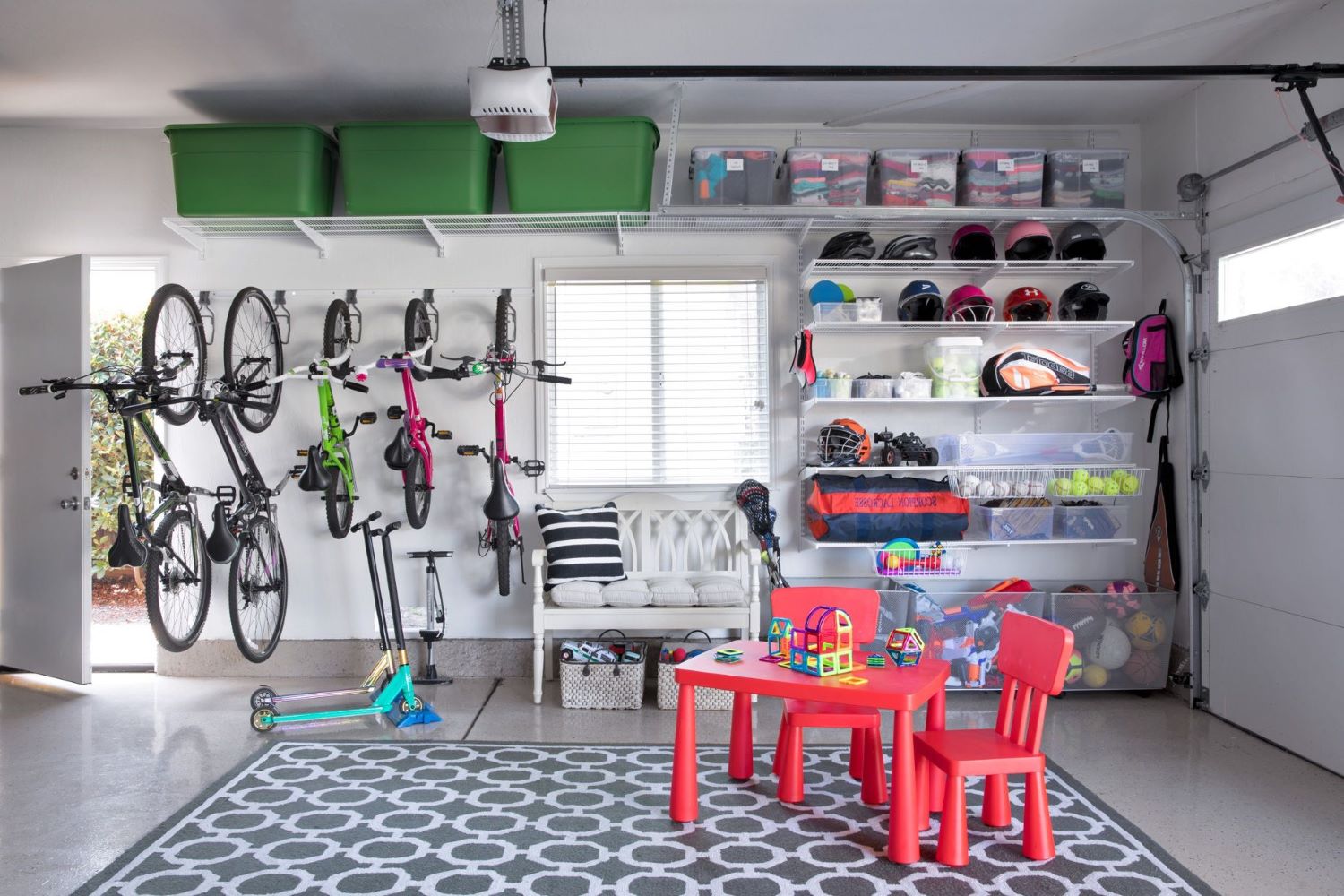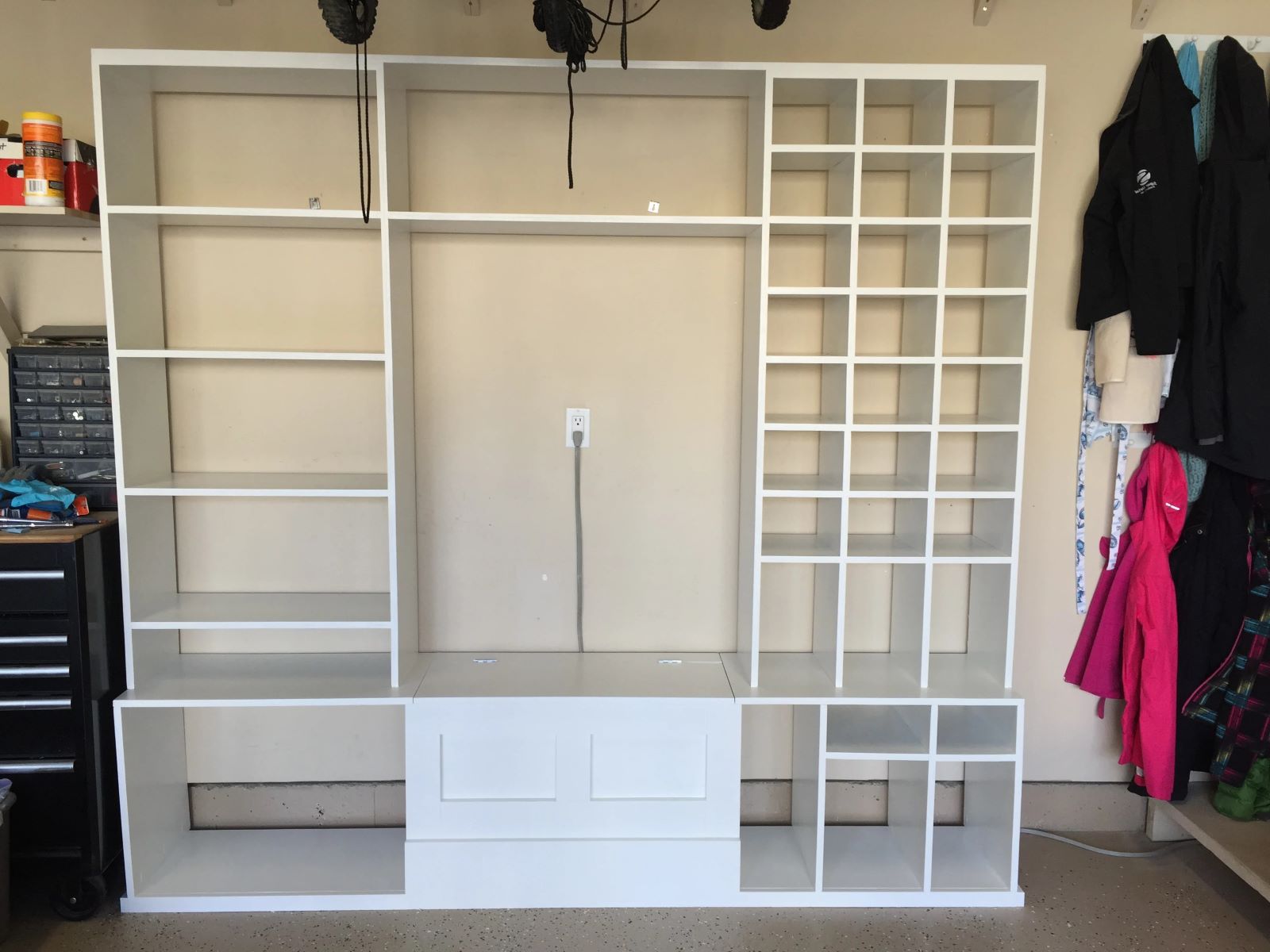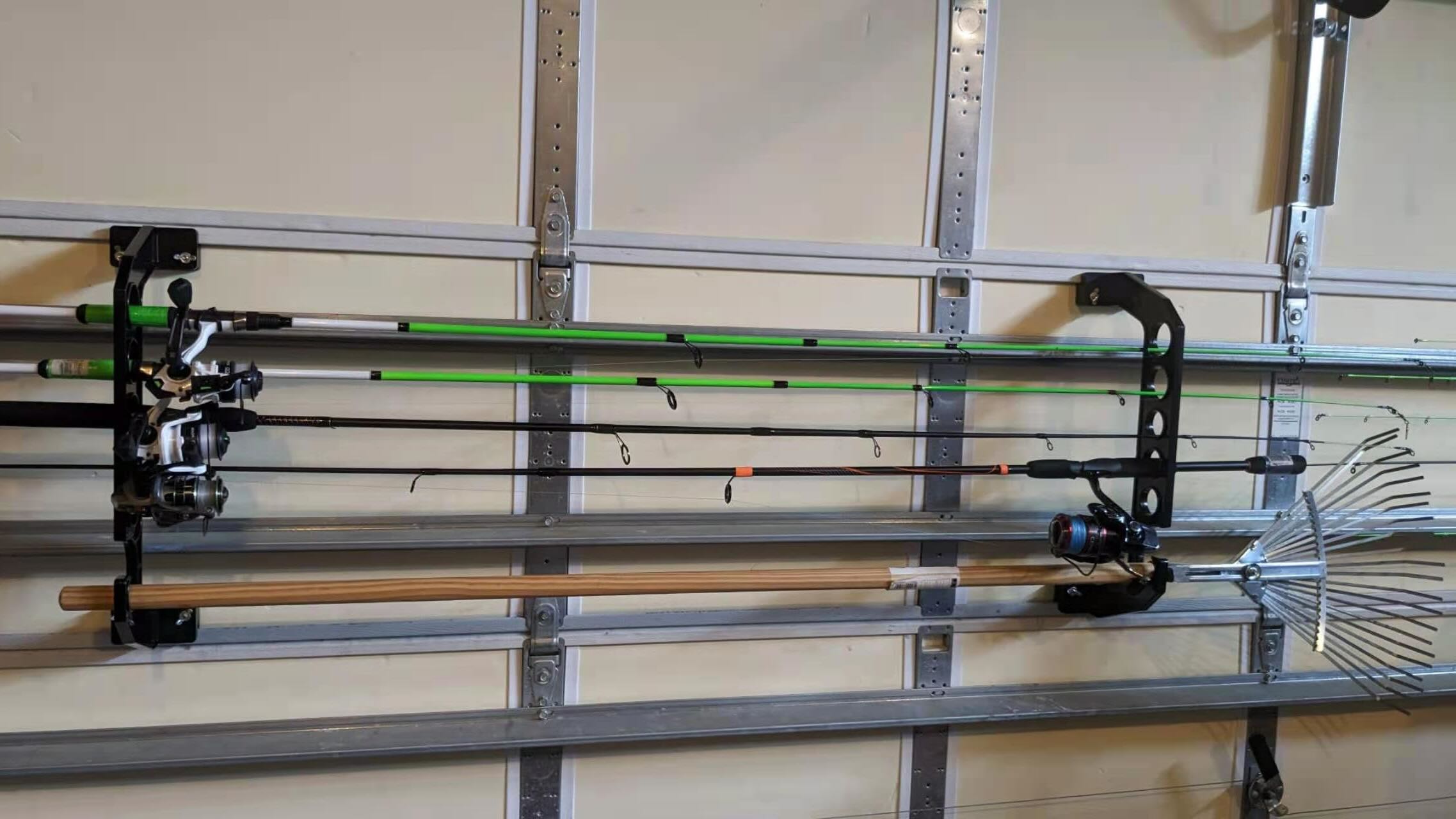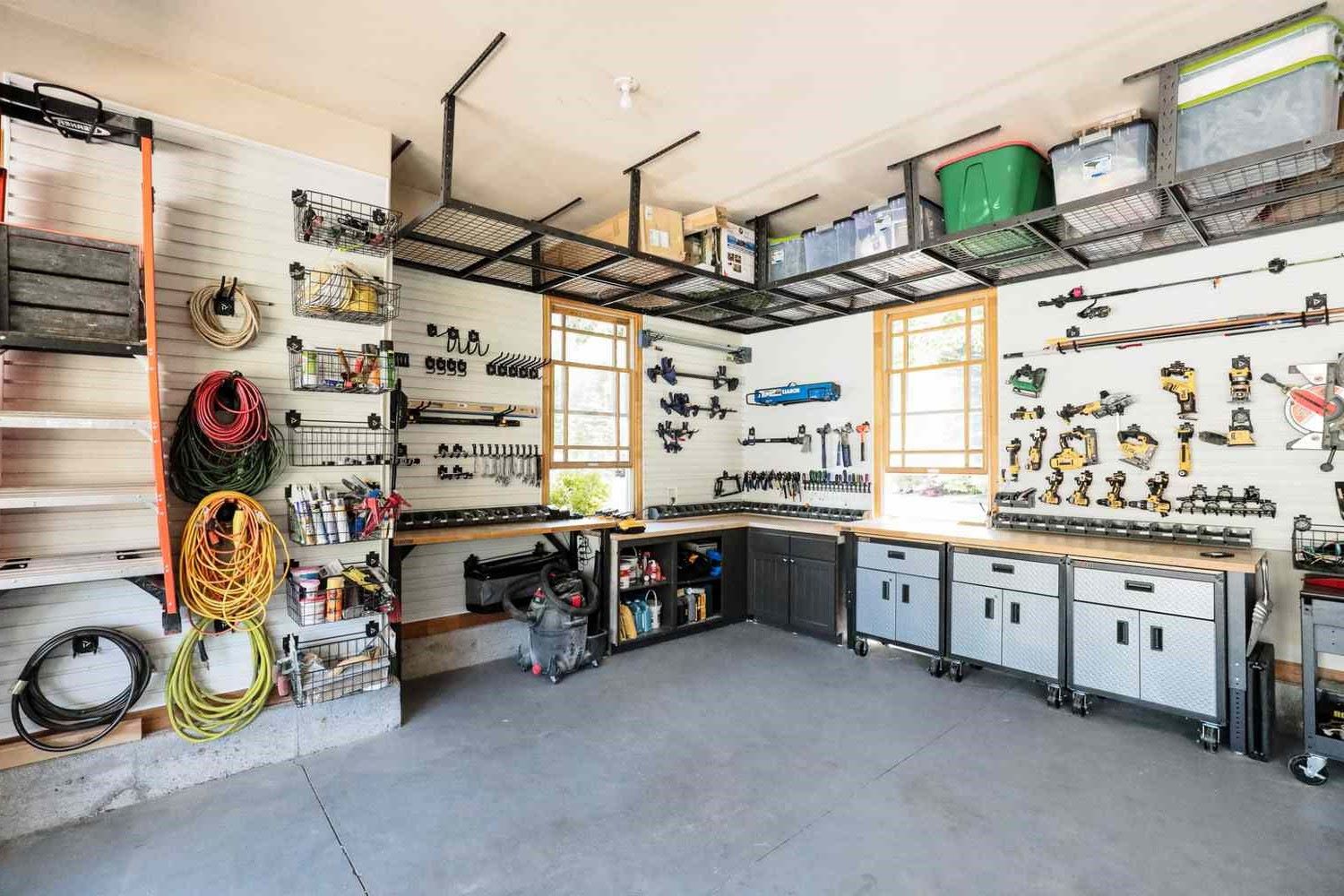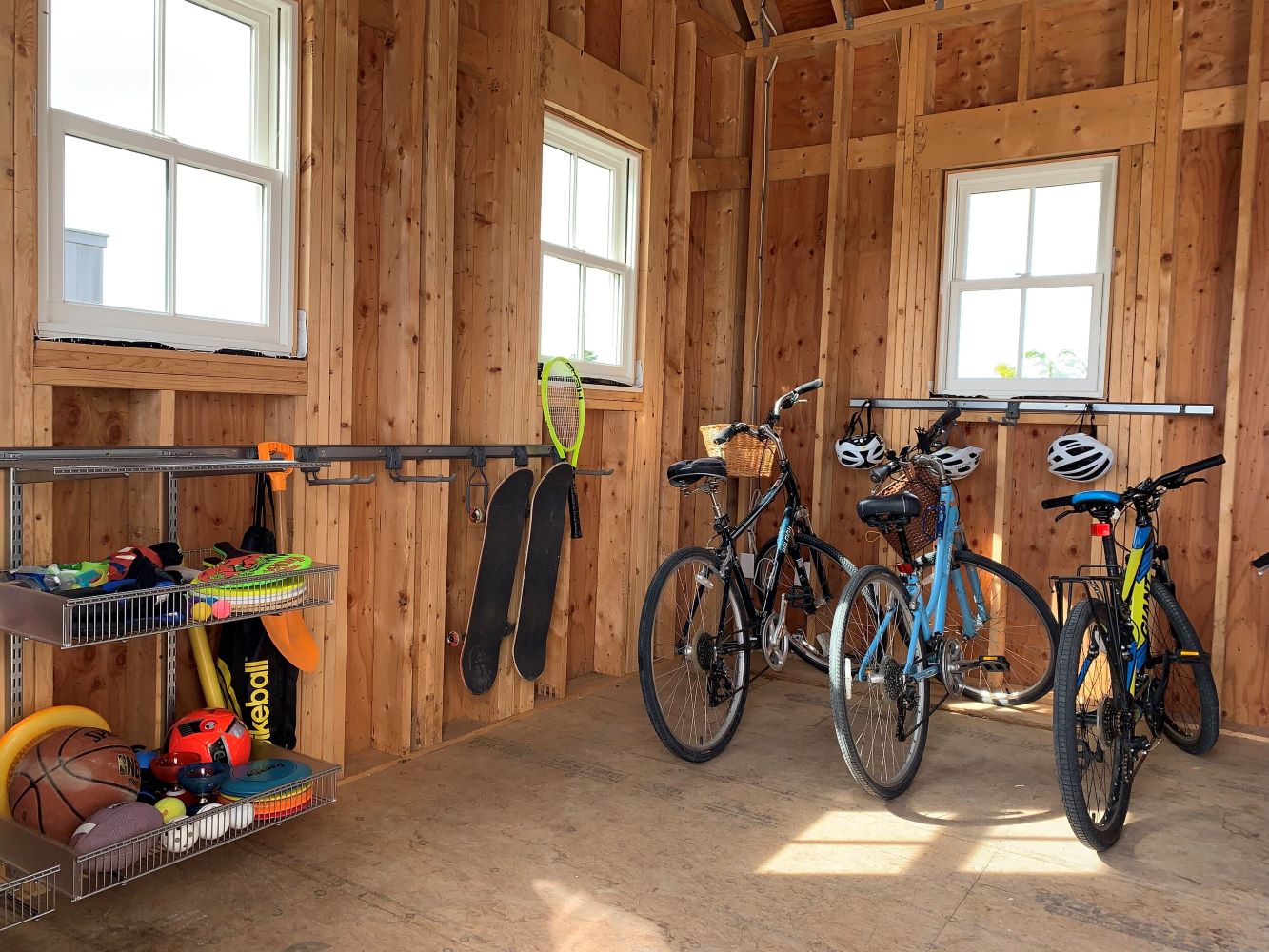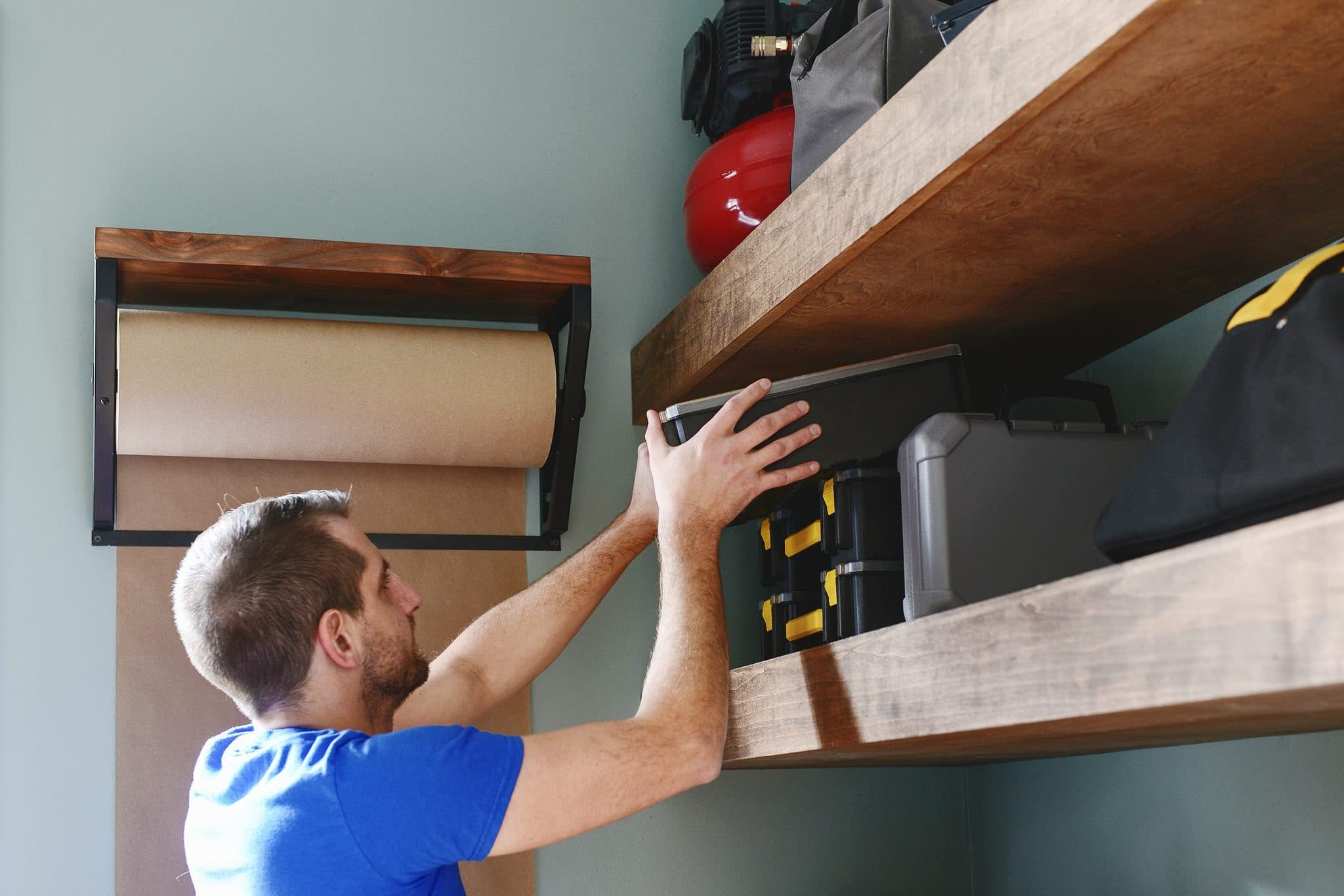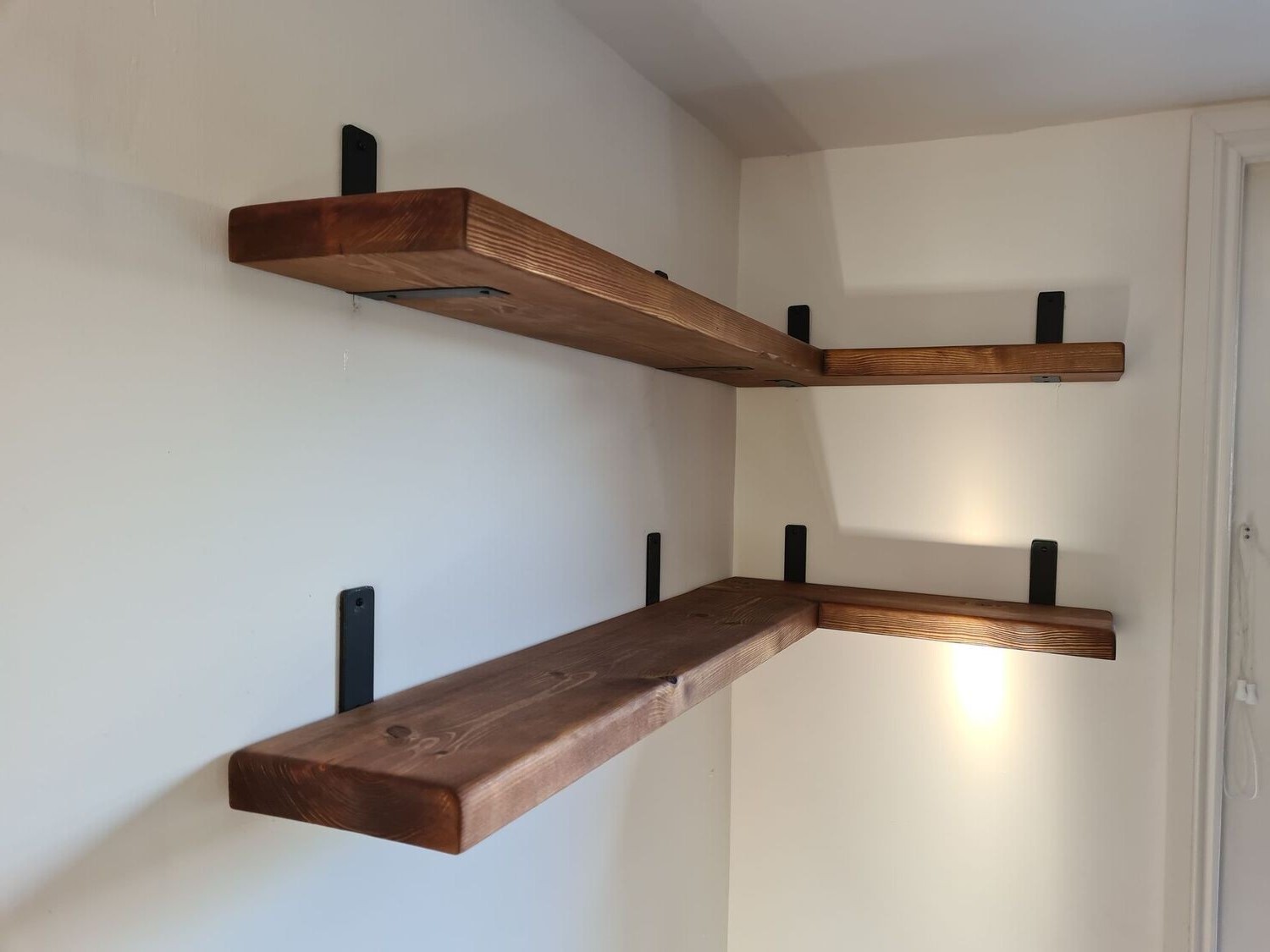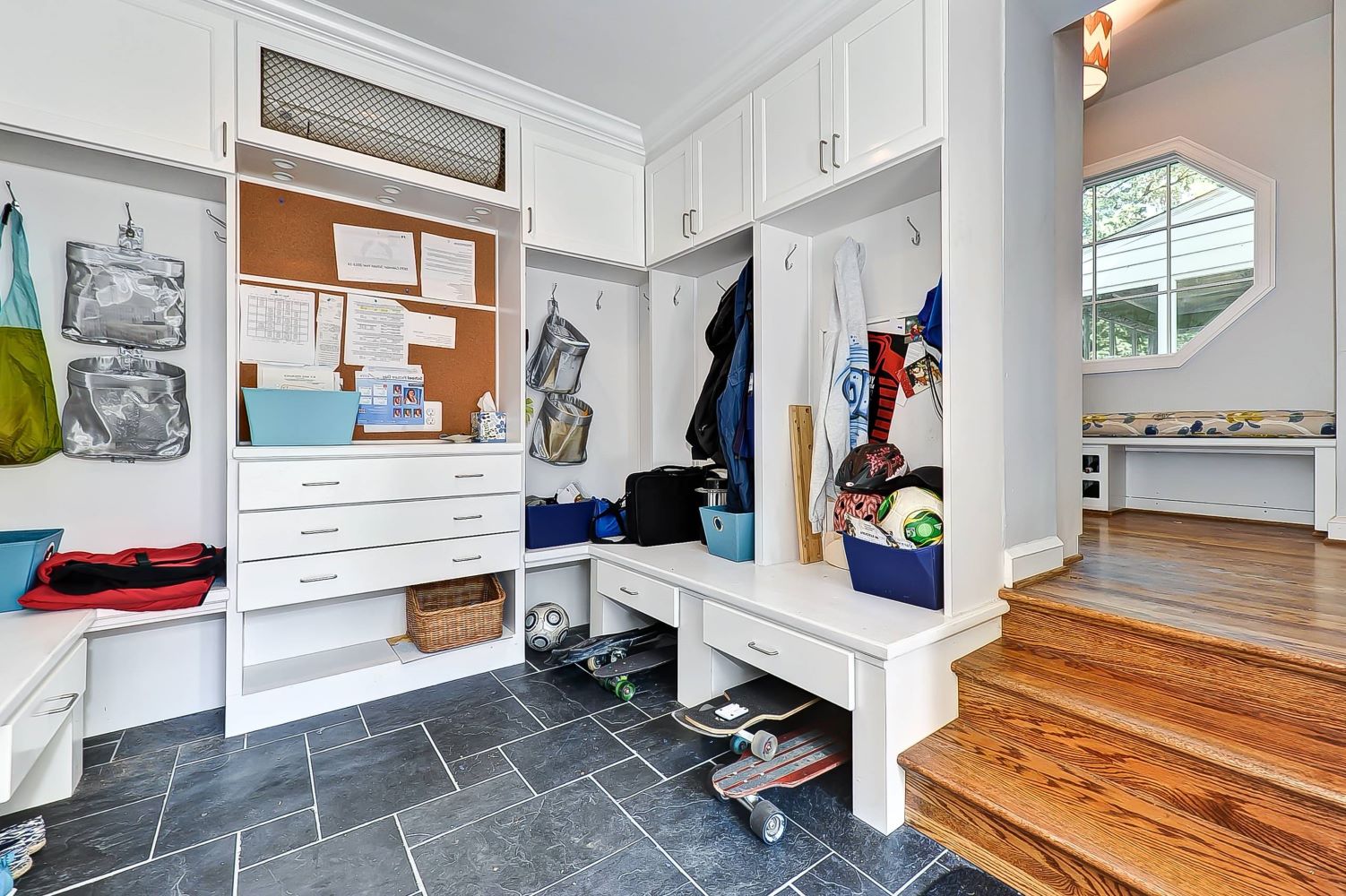Home>Organize & Storage>Garage Organization>DIY: Building Garage Cabinets – Organize Your Space With Custom Storage Solutions
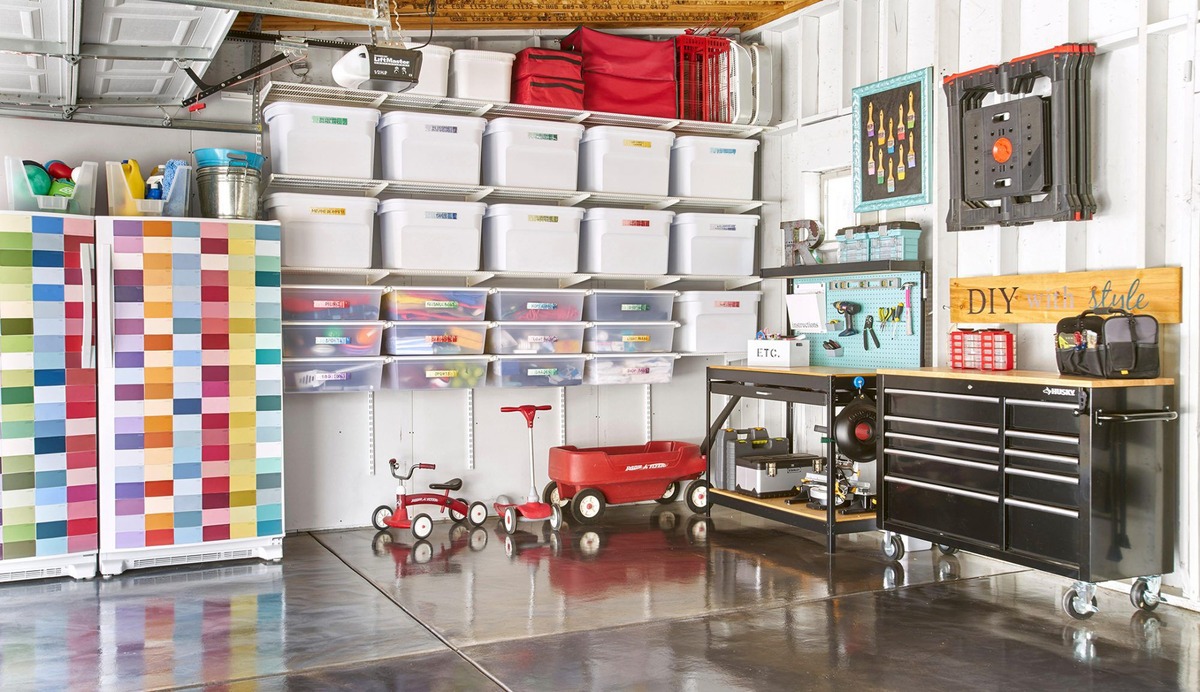

Garage Organization
DIY: Building Garage Cabinets – Organize Your Space With Custom Storage Solutions
Published: March 6, 2024

Senior Editor for Organize & Storage, Jeff transforms spaces with his DIY decor and organizational prowess. His design sensibility and engagement in the art community bring functional beauty to our pages.
Transform your garage with custom storage solutions! DIY garage cabinets for efficient organization. Maximize space and declutter with our step-by-step guide.
(Many of the links in this article redirect to a specific reviewed product. Your purchase of these products through affiliate links helps to generate commission for Twigandthistle.com, at no extra cost. Learn more)
Introduction
Are you tired of the clutter in your garage? Do you find it challenging to locate your tools and equipment amidst the chaos? Building garage cabinets can be the perfect solution to your organizational woes. By creating custom storage solutions, you can maximize space, keep your belongings neatly arranged, and transform your garage into a functional and efficient area. In this article, we will explore the benefits of building garage cabinets and provide you with a step-by-step guide to help you tackle this rewarding DIY project.
Read more: DIY Garage Cabinets Guide
Benefits of Building Garage Cabinets
-
Maximizing Space: Building garage cabinets allows you to make the most of the available space in your garage. By utilizing vertical storage, you can free up valuable floor space for parking your car or creating a functional workspace.
-
Customized Organization: With custom-built cabinets, you have the freedom to design storage solutions that cater to your specific needs. Whether it's shelving for tools, compartments for sports equipment, or racks for gardening supplies, you can create a system that keeps everything in its place.
-
Enhanced Safety: Cluttered garages can pose safety hazards, with tools and equipment strewn about. By installing cabinets, you can reduce the risk of tripping over items and create a safer environment for you and your family.
-
Improved Aesthetics: Neatly organized cabinets can transform the look of your garage, giving it a clean and polished appearance. Say goodbye to the days of a chaotic, messy space, and welcome a more visually appealing environment.
-
Protection for Belongings: Storing your belongings in cabinets provides protection from dust, moisture, and potential damage. This is especially important for items such as power tools, automotive supplies, and seasonal decorations.
-
Increased Property Value: Well-organized and functional garage storage can add value to your home. Potential buyers appreciate the convenience and practicality of a well-maintained garage, making it a desirable selling point.
-
Cost Savings: By having a designated place for your belongings, you can avoid the frustration of misplacing items and repurchasing tools or supplies you already own. This can lead to significant cost savings in the long run.
In summary, building garage cabinets offers a multitude of benefits, from creating a safer and more organized space to adding value to your property. With the advantages of customized organization and improved aesthetics, this DIY project is a worthwhile investment in both time and effort.
Planning Your Custom Storage Solutions
When embarking on the journey of building garage cabinets, meticulous planning is essential to ensure that your custom storage solutions align with your specific needs and the available space in your garage. Here are some crucial steps to consider as you plan your project:
-
Assess Your Storage Needs: Begin by evaluating the items you intend to store in the garage. Consider the varying sizes and shapes of your belongings, from small hand tools to larger equipment and seasonal items. This assessment will help you determine the types of storage solutions required, such as shelves, drawers, or specialized racks.
-
Measure Your Space: Take accurate measurements of your garage to determine the available space for installing cabinets. Consider the height, width, and depth of the area where the cabinets will be placed. Additionally, account for any obstructions such as light switches, outlets, or garage doors that may impact the cabinet layout.
-
Design the Layout: With your storage needs and space measurements in mind, create a layout for your garage cabinets. Consider the most efficient use of space, ensuring easy access to frequently used items and optimizing storage for less frequently accessed belongings. Sketching out a rough design or using online planning tools can aid in visualizing the layout.
-
Consider Accessibility: Think about how you will access the items stored in the cabinets. For frequently used tools, consider placing them within arm's reach, while seasonal items or less frequently used belongings can be stored in higher or lower cabinets.
-
Budget and Materials: Determine your budget for the project and research the materials needed for building the cabinets. Consider factors such as the type of wood or composite material, hardware, and finishing options. Balancing quality and cost-effectiveness is crucial in selecting the right materials for your custom storage solutions.
-
Regulations and Permits: Depending on your location, there may be regulations or permits required for building or modifying structures in your garage. Check with local authorities to ensure compliance with any building codes or zoning regulations before proceeding with the project.
By carefully planning your custom storage solutions, you can set the foundation for a successful garage cabinet project. Taking the time to assess your storage needs, measure the space, design the layout, consider accessibility, budget for materials, and adhere to regulations will contribute to the seamless execution of your DIY endeavor.
Tools and Materials Needed
Before diving into the construction of your garage cabinets, it's crucial to gather the necessary tools and materials to ensure a smooth and efficient building process. Here's a comprehensive list of what you'll need:
Tools:
- Measuring Tape: Essential for taking accurate measurements of the space and materials.
- Circular Saw or Table Saw: For cutting the wood or composite material to the required dimensions.
- Cordless Drill: A versatile tool for drilling pilot holes, driving screws, and assembling the cabinets.
- Screwdriver Set: Both flat-head and Phillips-head screwdrivers for various fastening needs.
- Clamps: To hold pieces together securely during assembly.
- Level: Ensures that the cabinets are installed evenly and straight.
- Safety Gear: Including goggles, gloves, and a dust mask for protection during cutting and assembly.
Read more: DIY Ikea Garage Storage Solutions
Materials:
- Plywood or MDF: Choose a sturdy and durable material for constructing the cabinet boxes and shelves.
- Wood Screws: Various sizes for securing the cabinet components together.
- Wood Glue: Provides additional strength and stability when joining pieces.
- Cabinet Hardware: Such as hinges, drawer slides, and knobs for functional and aesthetic purposes.
- Finishing Materials: Including paint, stain, or varnish to protect and enhance the appearance of the cabinets.
- Shelving Brackets: If incorporating adjustable shelves in the cabinet design.
- Edge Banding: Optional for covering the exposed edges of plywood for a polished look.
By ensuring that you have all the necessary tools and materials at your disposal, you can streamline the construction process and minimize interruptions. Additionally, having the right equipment and supplies on hand will contribute to the overall quality and longevity of your custom-built garage cabinets.
Step-by-Step Guide to Building Garage Cabinets
-
Prepare Your Workspace: Clear the area where you will be building the cabinets, ensuring that you have ample space to work. Lay down protective coverings to safeguard the floor from scratches or spills.
-
Cut the Materials: Using a circular saw or table saw, cut the plywood or MDF to the dimensions required for the cabinet components. This includes the sides, top, bottom, shelves, and any additional parts based on your design.
-
Assemble the Cabinet Boxes: Begin by constructing the basic cabinet boxes by attaching the sides to the top and bottom pieces. Use wood glue and screws to secure the joints, ensuring that the corners are square and the structure is sturdy.
-
Install the Back Panel: Once the cabinet boxes are assembled, attach the back panel to provide stability and support. This step reinforces the structure and ensures that the cabinets maintain their shape over time.
-
Add Shelves and Dividers: If your design includes shelves or dividers, install them within the cabinet boxes. Use shelving brackets for adjustable shelves, allowing flexibility in organizing different items.
-
Attach the Front Frame: If you opt for a framed cabinet design, attach the front frame to the cabinet box. This frame provides a decorative and finished look while also serving as a mounting surface for the cabinet doors.
-
Install Cabinet Doors: Mount the cabinet doors using hinges, ensuring that they open and close smoothly. Take precise measurements to ensure that the doors are aligned and level for a professional appearance.
-
Apply Finishing Touches: Sand the surfaces to smooth any rough edges and prepare the cabinets for finishing. Apply paint, stain, or varnish according to your preference, and allow adequate drying time before installing the cabinets in your garage.
-
Mount the Cabinets: With the construction and finishing complete, it's time to install the cabinets in your garage. Use a level to ensure that the cabinets are straight and even, and secure them to the wall for stability.
-
Organize Your Belongings: Once the cabinets are in place, organize your tools, equipment, and other items within the designated storage spaces. Utilize bins, hooks, and labels to further enhance the organization and accessibility of your belongings.
By following this step-by-step guide, you can successfully build custom garage cabinets that cater to your storage needs and enhance the functionality of your garage space. With careful attention to detail and precision in construction, you'll be able to enjoy the benefits of your personalized storage solutions for years to come.
Tips for Organizing Your Space
-
Categorize and Prioritize: Begin by categorizing your belongings based on their usage and frequency. Prioritize frequently used items for easy accessibility and place them within arm's reach. Group similar items together, such as gardening tools, automotive supplies, or sports equipment, to streamline the organization process.
-
Utilize Vertical Storage: Make the most of your garage space by incorporating vertical storage solutions. Install wall-mounted shelves, pegboards, or hanging racks to keep items off the floor and create a more spacious environment. This not only maximizes storage capacity but also allows for better visibility and organization.
-
Labeling and Visibility: Implement a labeling system to clearly identify the contents of each cabinet or storage bin. Use durable, easy-to-read labels for quick reference when retrieving items. Additionally, consider transparent storage containers to enhance visibility and quickly locate specific items without rummaging through multiple boxes.
-
Create Zones: Designate specific zones within your garage for different categories of items. For example, establish a workbench area for DIY projects, a gardening zone for tools and supplies, and a sports equipment zone for athletic gear. This zoning approach helps maintain order and facilitates efficient use of space.
-
Utilize Overhead Storage: Take advantage of overhead space by installing ceiling-mounted racks or platforms for storing seasonal items, bulky equipment, or items used less frequently. This frees up floor and wall space while keeping items accessible when needed.
-
Incorporate Functional Workspaces: Integrate functional workspaces within your garage layout, such as a workbench with built-in storage or a designated area for assembling and repairing equipment. By incorporating these workspaces, you can streamline tasks and keep tools and materials organized and within reach.
-
Regular Maintenance: Establish a routine for maintaining the organization of your garage cabinets and storage areas. Periodically declutter and reorganize to prevent accumulation of unnecessary items and ensure that everything remains in its designated place.
-
Safety Considerations: When organizing your space, prioritize safety by storing hazardous materials such as chemicals, paints, and power tools in secure and designated areas. Keep these items out of reach of children and pets, and ensure that they are properly labeled for easy identification.
-
Utilize Hooks and Hangers: Install hooks, hangers, and tool racks to keep frequently used items such as brooms, shovels, and ladders off the floor and neatly organized. This not only conserves space but also prevents potential tripping hazards and maintains a tidy appearance.
-
Regular Review and Adjustment: Periodically review the organization of your garage space and make adjustments as needed. As your storage needs evolve, be flexible in reorganizing and optimizing the layout to accommodate changes in equipment, tools, or hobbies.
By implementing these tips for organizing your garage space, you can create a well-structured and efficient environment that maximizes the benefits of your custom-built garage cabinets. With careful planning and attention to detail, your organized garage will not only enhance functionality but also contribute to a more enjoyable and productive space for your DIY and home improvement projects.
Maintenance and Upkeep of Garage Cabinets
Proper maintenance and upkeep are essential for preserving the functionality and appearance of your garage cabinets. By implementing regular care and preventive measures, you can extend the lifespan of your custom storage solutions and ensure that they continue to meet your organizational needs. Here are key strategies for maintaining and upkeeping your garage cabinets:
-
Regular Cleaning: Schedule routine cleaning sessions to remove dust, debris, and any spills that may accumulate on the surfaces of your cabinets. Use a mild cleaning solution and a soft cloth to wipe down the exteriors and interiors, paying attention to corners and edges where dirt may collect.
-
Inspect for Damage: Periodically inspect the cabinets for any signs of wear, damage, or structural issues. Check for loose hinges, damaged shelves, or any warping or discoloration of the materials. Promptly addressing these issues can prevent further deterioration and maintain the integrity of the cabinets.
-
Adjust and Tighten Hardware: Over time, the hardware such as hinges, drawer slides, and knobs may loosen due to regular use. Periodically check and tighten these components to ensure that the doors and drawers operate smoothly and securely. Replace any damaged or worn hardware as needed.
-
Monitor Moisture Levels: Garages are susceptible to fluctuations in temperature and humidity, which can impact the condition of the cabinets. Keep an eye on the moisture levels in the garage and take preventive measures to mitigate excessive humidity, such as using a dehumidifier or ensuring proper ventilation.
-
Reapply Finishes as Needed: If your cabinets have a painted or stained finish, monitor the condition of the surfaces and reapply finishes as needed. Over time, the finish may wear down, especially in high-traffic areas. By maintaining the protective finish, you can safeguard the cabinets from moisture and physical damage.
-
Organize and Declutter Regularly: Periodically review the contents of your cabinets and declutter any items that are no longer needed. This not only prevents overcrowding but also allows you to reassess the organization of your belongings and make adjustments as necessary.
-
Preventative Pest Control: Take measures to prevent pests such as insects or rodents from infiltrating your garage cabinets. Seal any gaps or openings that may serve as entry points, and consider using pest deterrents or traps if necessary.
-
Avoid Overloading Shelves: Be mindful of the weight capacity of the shelves and avoid overloading them with heavy items. Distribute the weight evenly and consider reinforcing shelves if you plan to store particularly heavy items.
-
Address Spills and Stains Promptly: In the event of spills or stains, address them promptly to prevent permanent damage to the cabinet surfaces. Use appropriate cleaning methods based on the type of spill to avoid staining or discoloration.
By incorporating these maintenance practices into your routine, you can ensure that your garage cabinets remain in optimal condition, providing long-term functionality and organization for your garage space. Regular care and attention to the upkeep of your custom storage solutions will contribute to a well-maintained and efficient garage environment.
Read more: DIY Above Garage Door Storage Ideas
Conclusion
In conclusion, building garage cabinets offers a multitude of benefits, from maximizing space and customized organization to enhanced safety and improved aesthetics. By carefully planning your custom storage solutions and following a step-by-step guide, you can create functional and efficient storage that transforms your garage into a well-organized space. With the incorporation of tips for organizing your garage and the implementation of maintenance and upkeep strategies, your custom-built cabinets will continue to serve as valuable assets, providing long-term storage solutions for your tools, equipment, and belongings. Embracing the DIY approach to building garage cabinets not only adds practicality and convenience to your home but also allows for a personalized touch that reflects your specific storage needs and preferences. As you embark on this rewarding DIY project, the transformation of your garage into a clutter-free and functional area awaits, offering a sense of accomplishment and a more enjoyable space for your home improvement endeavors.

